How to Undo System Restore in Windows 10/8/7 Without Data Loss
When you regret performing a System Restore on your Windows PC, don't worry. You have a chance to undo the operation here. Qiling software has collected reliable tips with its file recovery software on this page to guide you undo the System Restore on your Windows 10, 8, 7 or XP computer without losing any data.
PAGE CONTENT:
- Part 1. Restore Lost Data and Back Up Valuable Files In Advance
- Part 2. Undo System Restore in Windows 10/8/7/XP
- Part 3. Recover Lost Files after System Restore Undo
Can I Undo System Restore in Windows 10/8/7
"Is it possible to undo the latest System Restore in Windows? I recently performed System Restore on my computer, but it turned out that the Windows OS didn't work well. I want to cancel this operation and bring my Windows OS back to the last healthy state. How to undo the operation in Windows 10/8/7 or even Windows XP? "
When you feel regretful for having done the System Restore, relax and be patient. Here, by following provided tips and methods on this page, you will be able to undo the operation, bringing the Windows OS to the previous state without losing any data on Windows 10/8/7/XP computers.
No matter you are using Windows 10, Windows 8, 7 or XP, here is a list of crucial information that you should be aware of:
- A data backup is highly necessary before undoing a System Restore.
- A System Restore cannot be canceled if you did it in Safe Mode.
- A System Restore cannot be canceled if you did it from System Recovery Options.
Part 1. Restore Lost Data and Back Up Valuable Files In Advance
Although we know that to perform a System Restore will not cause data loss issue in the %UserProfile% folder. It only removes apps, drivers, and updates while restoring Windows system from the previously created restore point. However, sometimes, due to unknown reasons, the OS restoring process gets stuck or even fails to complete the restoring process. If it's so, how to restore the lost files?
If you have finished the whole restoring process, how to avoid unnecessary data loss issue on your computer while undoing the System Restore? Follow tips here to protect your data:
# 1. Restore Lost Data
If you lost files after restoring OS from the restore point, stop using your computer and turn to Qiling file recovery software for help. You can refer to Part 3 for a detailed guide.
# 2. Back Up Essential Files In Advance
You can either choose to manually copy and paste or use free backup software to back up multiple files to another partition or an external storage device at one time. No matter which method you'd like to choose, it's all necessary and useful.
After restoring and backing up your precious data, you can move to Part 2 and find specific methods for undoing Windows System Restore on your computer.
Part 2. Undo System Restore in Windows 10/8/7/XP
According to different Windows Operating System, the ways to undo it are variable. And here you can follow the specific methods on your Windows OS for a guide now.
# 1. Undo System Restore on Windows 10/8.1/8
Here you'll have two options in Windows 10, Windows 8.1/8 and accomplish the process on your own:
Option 1. Undo System Restore at Boot (in Windows 10/8.1/8)
For Windows 10 users:
Step 1. Reboot your Windows 10 PC into Advanced Startup, and click "Troubleshoot".
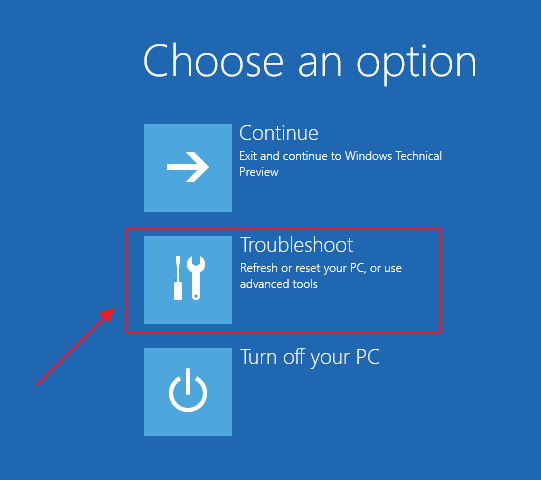
Step 2. Select Advanced options, choose "System Restore".

Step 3. Click on the Administrator Account and enter your password, click "Continue" to move on.
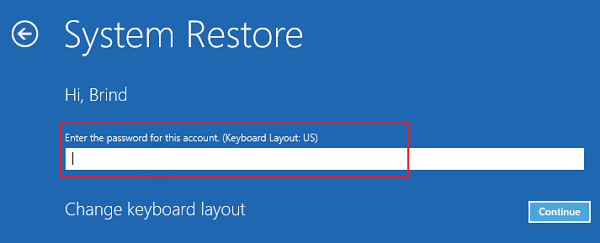
Step 4. Click "Next" on System Restore window, select the restore point which as Undo under Type column, click "Next".
Click "Scan" for affected programs to see what will be changed by undoing your current restore point.
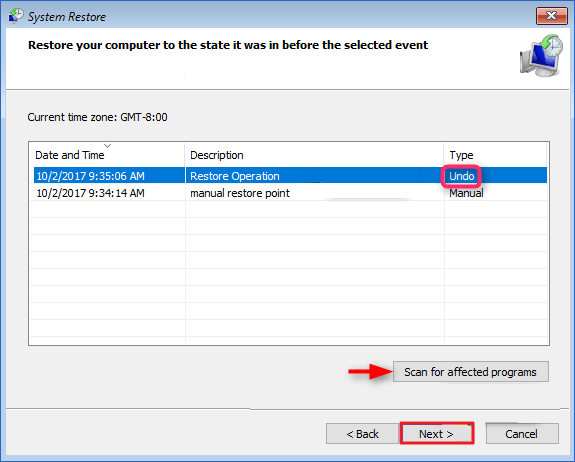
Step 5. Click "Finish".
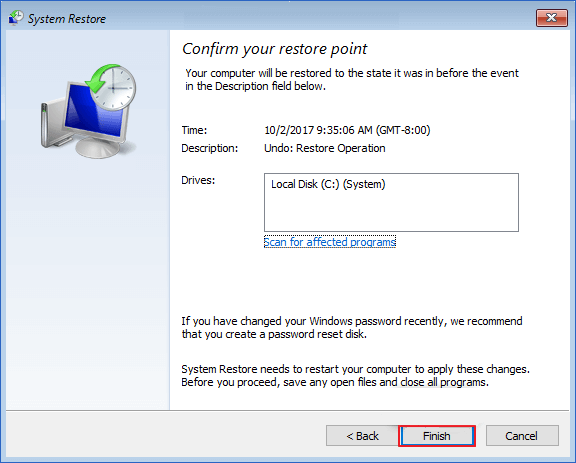
Step 6. Click "Yes" to restart and bring back your system to the state before you did the System Restore.
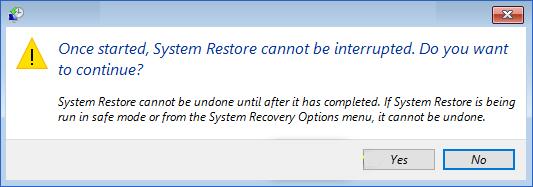
Step 7. Finally, click "Restart" to complete.
After this, you can close the window, and you'll get back to the wanted system state by then.
For Windows 8/8.1 users:
Step 1. Press Windows + R keys to bring up Run dialog and type: shutdown /r /o /t 00 to bring up the Advanced Boot option
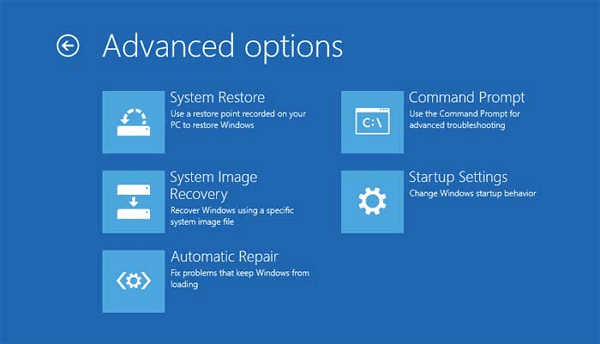
Step 2. Select System Restore, and check Undo System Restore on the window, click "Next" to continue.
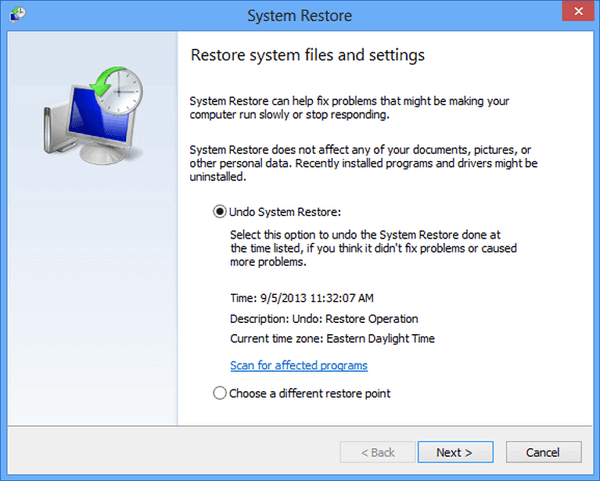
After this, you can directly follow the on-screen guidelines to complete the process. Restart your computer, and you'll get your computer back to the previous system restate.
Method 2. Undo System Restore in Windows 10/8.1/8
Step 1. Go to Control Panel and click Recovery, select "Open System Restore".
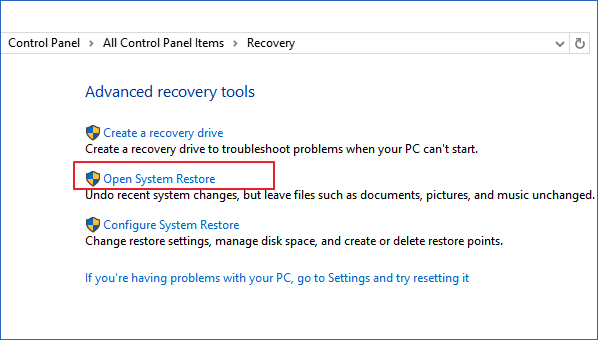
Step 2. Select "Undo System Restore" and click "Next".
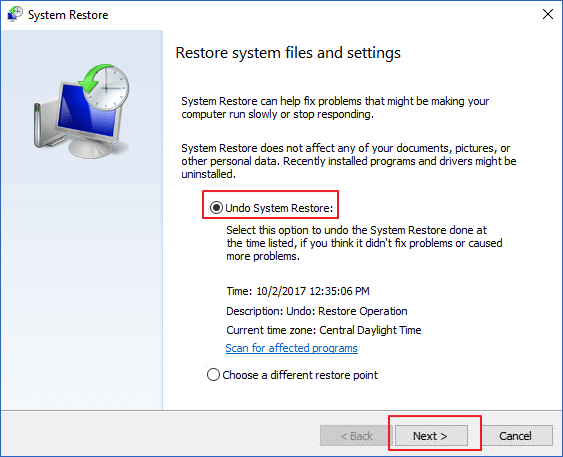
You can click "Scan for affected programs" to see what will be changed after undoing the System Restore.
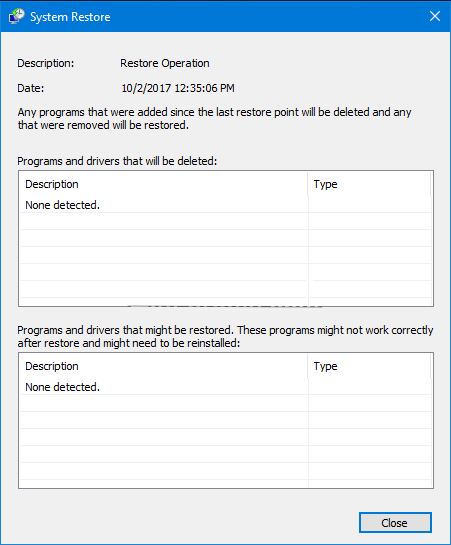
Step 3. Click "Finish" to complete.
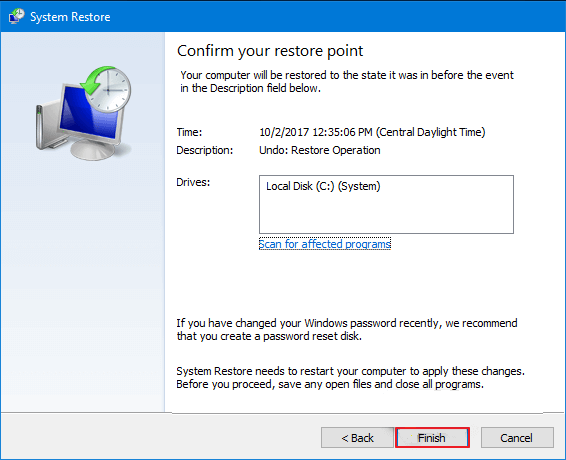
Step 4. Click "Yes" to start and wait until the process ends.
Step 5. Finally, when the process completes, click "Close" to finish.
Restart your computer and sign in to Windows 10 or Windows 8.1/8.
# 2. Undo System Restore in Windows 7
Step 1. Click Start and type System Restore in the search box. And click "System Restore" on the result list.
Step 2. Click "Undo my last restoration" on System Restore window and click "Next".
Step 3. Then click "Finish" to undo the System Restore on Windows 7.
Your computer will restart once the process is complete. Log on to the computer, and you should be able to use your PC at the earlier state by then.
# 3. Undo System Restore in Windows XP
If you are using a very old Windows Operating System such as XP, and you may not be able to find a way for undoing Windows XP System Restore on your own. Fortunately, Qiling Software has gathered a way for you to follow and give it a try to do this job on your XP computer:
Step 1. Click on the Start button, choose "All Programs" > "Accessories" > "System Tools" > "System Restore".
Step 2. Choose the option - Undo My Last Restoration, and click the Next button.
Step 3. Click "Next" which is relabeled to the Undo button.
Windows system will undo the System Restore operation, and your computer restarts automatically. You can log in to your PC.
Step 4. Click the OK button in the System Restore window after the computer restarts.
Part 3. Recover Lost Files after System Restore Undo
After bringing the computer back to the last state, some Windows users may have failed to create a backup or extract essential files in advance and are now facing a severe data loss problem. Some of them may even discover that the undoing process deleted files on your PC without asking you for permission.
So how to effectively restore deleted files and data becomes a new task. Stop using your computer and turn to Deep Data Recovery for a try. It will assist you in scanning and restoring disappeared files as much as it can.
Follow the guides below to restore your lost files now:
Step 1. Download and Install for Deep Data Recovery Software
Click the download button to get this Software installation package and install it on your computer. Run it and click "Next".

Step 2. You can view all of the drives. Select the target partition and click the "Scan" button to start.

Step 3. Scan the partition. Once you click the "Scan" button, the process begins immediately. The time required varies, mainly depending on file size and disk health.

Step 4. Recover the lost data. Before recovery, you can right-click the object file, and choose to preview first. Then, click the "Recover" button to recover the selected files. You need to save the recovered files to another safe place to avoid data overwriting.
Related Articles
- Hard Drive Recognized in BIOS But Not in Windows
- 3-Step Solution to Recover Deleted Picasa Photos with Ease
- How to Recover Data Lost By Ghost Recovery
- Deep Data Recovery Software Free Download with Crack